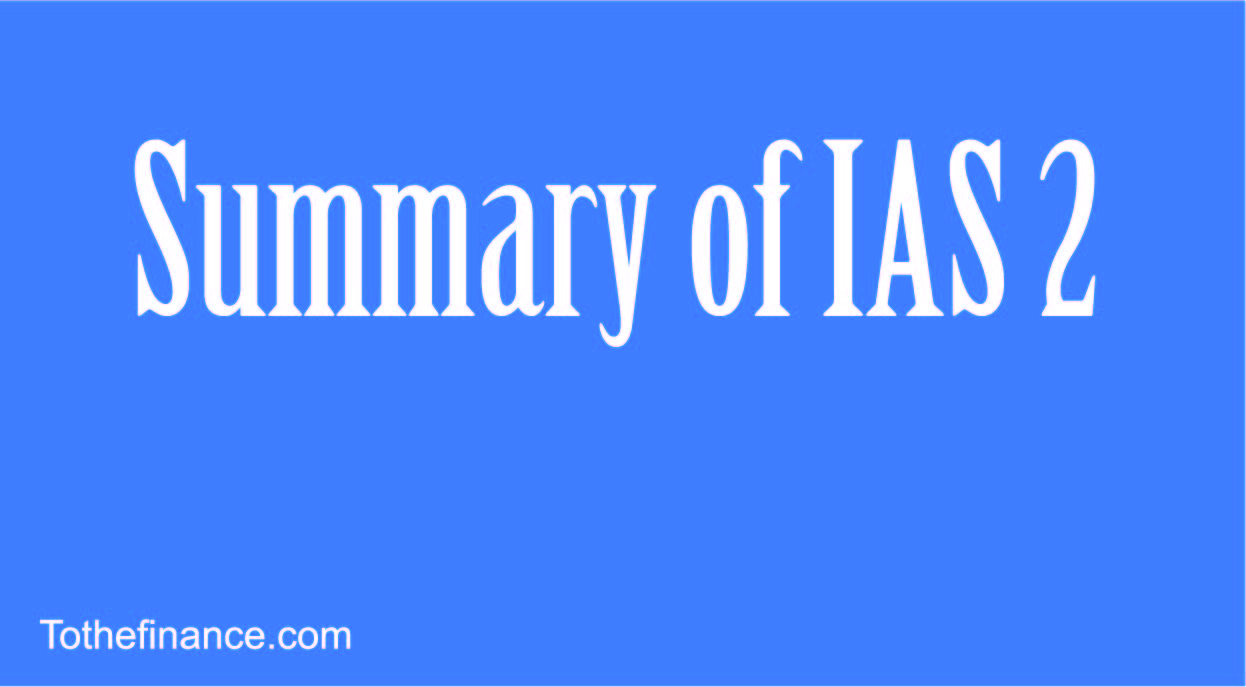IAS-2 (inventory valuation) is about calculating and recording the value of the inventory items. These inventory items include raw material, finished goods, and goods in process. The main statement of the IAS-2 is,
‘’The inventory should be valued lower of the cost and NRV-(Net realizable value)’’
Cost – The cost refers to the amount of money that was incurred to produce or make an object/something under consideration. This can be some product. Generally, the following elements are included in the cost of the product.
- Cost to purchase the asset (it includes invoice price, installation, handling, transportation etc).
- Cost of conversion (it includes the cost of manufacturing overhead like variable and fixed overheads).
- The cost to bring things to the location of use.
So, all of these costs can be included in the cost of inventory. However, some other costs like cost of storage, abnormal cost, cost of selling, cost of interest when inventories are purchased via financing, and the exchange gain/loss on the rate of acquisition and the rate of invoice do not form part of the cost.
NRV – Net realizable value – NRV refers to a net realizable value. It’s a value that can be realized by selling the inventory under consideration. For instance, you can sell product-A @ the sales price of $100 and the marketing cost of selling the product is $10. So, NRV will stand at $90 ($100-$10).
So, if you come to know that the cost of product A is $80 and as we calculated NRV is $90. In this case, the inventory is to be recorded at $80. It’s because $80 (cost) is less than NRV which is $90.
The formula of the NRV
Following is the formula of NRV – Net reliable value,
NRV = (Cost of the product – selling cost of the product)
Scope of the IAS-2
IAS-2 is applicable to the following three main areas.
- Raw material
- Work in process
- Finished goods
The following items are excluded from the scope of IAS-2.
- Financial instruments
- Construction contracts
- Biological assets
It’s the main treatment of the IAS-2. In addition to this, there is certain disclosure required by the IAS-2.
Also read, Effective strategies to manage inventory
Disclosures required by the IAS-2
Following disclosures are required by the IAS-2.
- The accounting policy should be included in the financial statement of the business.
- Classification of the inventory – For instance, it can be classified as raw material, work in process, and finished goods.
- Any amount of inventory that is written down during reporting period should be disclosed.
- The reversal in terms of NRV and cost + circumstances that led to such reversal should be disclosed.
- Details of the inventories that have been pledged as security for the liabilities.
- Cost of goods sold in the period.
Conclusion
IAS-2 states that inventory should be valued at the lower of cost and NRV. The cost is the amount incurred in making/purchasing, handling, conversion, and transporting the goods. On the other hand, NRV is the amount that can be realized by selling the product. So, at the end of the accounting period, the inventory should be valued at a lower cost and NRV.
The scope of IAS-2 is on the raw material, finished goods, and work in process. On the other hand, financial instruments, construction cost, and biological assets are not covered in the scope of IAS-2.
In addition to this, IAS-2 requires certain disclosures that include disclosure of the accounting policy, and classification of the inventory items. Amount written down for the inventory, reversal in terms of NRV, details of a pledge as a security, and cost of goods sold etc.
Frequently asked questions
What are the accounting policies for inventory valuation?
There are two applicable policies for inventory valuation.
- FIFO – First in First out – As per this policy, the goods purchased first are sold first.
- AVCO – Weighted average cost of the inventory is calculated for the existing and new inventory purchased.
Can we use the LIFO method in accounting?
No, the LIFO method has been prohibited. It’s because of the fact that it might distort financial reporting in terms of financial statement, and profitability.
What’s the principle statement of IAS-2?
The principle statement of IAS-2 is,
- Inventory should be valued at the lower of cost and NRV.
What is the cost of inventory?
The cost refers to making/purchasing, transporting, and handling the inventory items.
What is the NRV of the inventory?
NRV is the net realizable amount that can be realized by selling the inventory. For instance, the book value of the product is $10 and the selling expense is $2. It means the net realizable value will stand at $8 ($10-$2).
What is the principle statement of IAS-2 (inventory)?
The principle statement of IAS-2 is
‘’Inventory should be valued at lower of cost and NRV’’.
